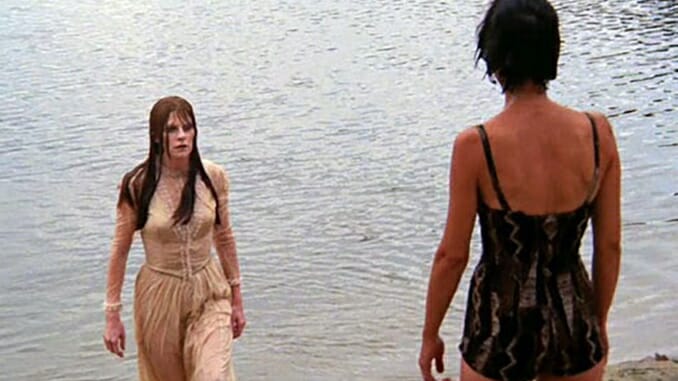Let’s Scare Jessica to Death Is 50, but Its Portrayal of Gaslighting Is Timeless
The 1971 horror film added female disempowerment to its vampire tale.

“Don’t tell them. They won’t believe you.”
A woman grappling with mental health issues, a move to an isolated town upstate, the sneering looks of unfriendly locals. Any of the unsettling parts of Let’s Scare Jessica to Death’s premise should seem as familiar to anybody in 2021 as they must have in 1971, when the psychological vampire tale first debuted.
The film was hard to find for years, but a Blu-ray release by Scream Factory last year has remedied that, which, considering its story hasn’t aged a bit, is fortunate for horror fans who might be interested in discovering it for the first time.

Young couple Jessica and Duncan (Zohra Lampert and Barton Heyman) and their friend, Woody (Kevin O’Connor), move into an old house far from the city to pursue their dream of selling antiquities. Jessica has returned to her husband Duncan after a long stint in a mental health institution, and it’s clear from the way both men are now treating her that they’re concerned she may have some manner of relapse without warning. The hostile locals in their new town certainly aren’t helping.
As they get settled in the house, they discover a lonely woman named Emily (Mariclare Costello). They take her in, but it becomes clear pretty quickly that the sinister voices in Jessica’s head and the increasingly violent townsfolk are all the result of Emily’s supernatural machinations.
Emily may fool (and successfully seduce) Duncan, but the viewer will be onto her game pretty quickly: There’s a reason she bears such a striking resemblance to a woman in a century-old photograph the antiquers find in the attic, and why all the sneering men in town have wounds on their necks—Emily is a vampire, she is turning the entire town into her thralls, and she is happy to toy with Jessica before eating her husband.
Let’s Scare Jessica to Death may have shades of Carmilla or The Vampire Lovers in it, but it plays mostly as a paranoid psychological thriller. Throats are certainly getting ripped out, but that’s not the specific fear Jessica is feeling for most of the film’s runtime. It’s the terrifying suspicion that she’s either losing her mind again, or, worse, that she’s not and nobody around her will believe her.
-

-

-

-

-

-

-

-

-

-

-

-

-

-

-

-

-

-

-

-

-

-

-

-

-

-

-

-

-

-

-

-

-

-

-

-

-

-

-

-










































